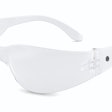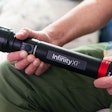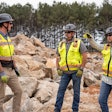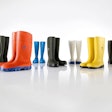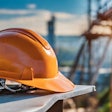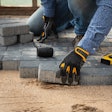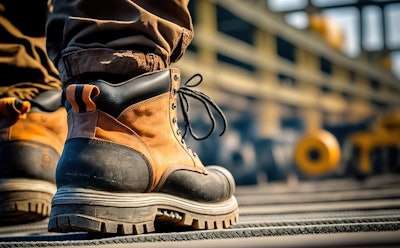
According to the U.S. Bureau of Labor Statistics, in 2020, in the construction sector, there were 4,140 nonfatal injuries to the foot.
Preventative safety measures can go a long way in not becoming one of those statistics. The construction sector entails a great deal of exposure to heavy machinery, falling objects, sharp objects and electrical shocks. To that end, ASTM F2413-18 is the Standard Specification for Performance Requirements for Protective (Safety) Toe Cap Footwear that covers the minimum design, performance, testing and classification requirements.
It prescribes fit, function and performance criteria for footwear designed to be worn to provide protection against a variety of workplace hazards that can potentially result in injury, including eight regulations for impact protection, metatarsal protection, compression protection, electrical hazard protection, static dissipation, puncture resistance, dielectric insulation and chainsaws.
The Occupational Safety and Health Administration (OSHA) indicates in its Code of Federal Regulations 1910.136 that ‘the employer shall ensure that each affected employee uses protective footwear when working in areas where there is a danger of foot injuries due to falling or rolling objects, or objects piercing the sole, or when the use of protective footwear will protect the affected employee from an electrical hazard, such as a static-discharge or electric-shock hazard, that remains after the employer takes other necessary protective measures.”
ASTM F2413 Guidelines
OSHA references ASTM F2413 in this Personal Protective Equipment (PPE) code.
ASTM F2413 impact protection (I) requirements address safety toe impact protection levels. Steel, aluminum, or composite materials are used for safety toe boxes built into the toe section of a boot or shoe to provide protection from falling objects commonly found on worksites.
ASTM F2413 regulations outline three levels of protection safety toes can provide: protection against 75-ft.-lb. impacts, 50-ft.-lb. impacts and 30-ft.-lb. impacts. The same levels of protection also are provided in Metatarsal Impact Protection Levels (Mt), which protect the metatarsal bones that run across the top of the foot. Some safety footwear includes a metatarsal guard, which is a leather flap with metal or plastic that folds over the boot laces to protect the metatarsal bones.
A foot-pound is the amount of force (in pounds) an object exerts when dropped from the height of one foot, such as 75 lbs. of protection from an impact of an object of that weight dropped from a height of one foot.
ASTM F2413 also provides Compression Protection Levels (C) of up to 1,000 lbs.; 1,750 lbs. and 2,500 lbs. to provide protection against objects rolling over a worker’s feet. Compression-resistant soles are a safety measure.
Electrical Protection and Puncture Resistance
The standard also provides Electrical Hazard Protection (EH), protecting against open circuits up to 600 volts in dry conditions. A worksite may include elements that lead to dangerous electric shocks, such as live circuits and electrically energized conductors.
Static dissipation (SD or ESD) is included in ASTM F2413 regulations. Three levels provide protection of electrical resistance of 1 megaohm to 100 megaohms; 1 megaohm to 35 megaohms and of 1 megaohm to 10 megaohms. As static dissipative footwear conducts static electricity to the floors, higher resistance levels indicate it is easier for static electricity to do so.
These regulations address potentially dangerous situations caused by static discharge.
Puncture Resistance (PR) regulations indicate that soles must show no sign of cracks after 1.5 million flexes and must have a minimum puncture resistance of 270 pounds. Typical protection includes a non-removable plate placed between the insole and outsole of the footwear that prevents sharp objects commonly found on jobsites from penetrating the footwear.
ASTM F2413 also regulates for dielectric insulation (DI), which goes beyond electrical hazard-resistance. This all-rubber large footwear is typically worn by those working around greater electrical hazards, such as power lines.
OSHA Recommendations
Chainsaw protection (CS) also is part of ASTM F2413 and applicable for those heavily engaged in work involving chainsaws. Footwear that is designed and manufactured to meet the ASTM F2413 standards usually carries a label on its tongue or elsewhere in the shoe or boot.
Ultimately, an employer should direct each worker as to the best foot protection they should wear for the job function. OSHA recommends a company’s safety manager should conduct an assessment to determine safety features for which workers need protection.




